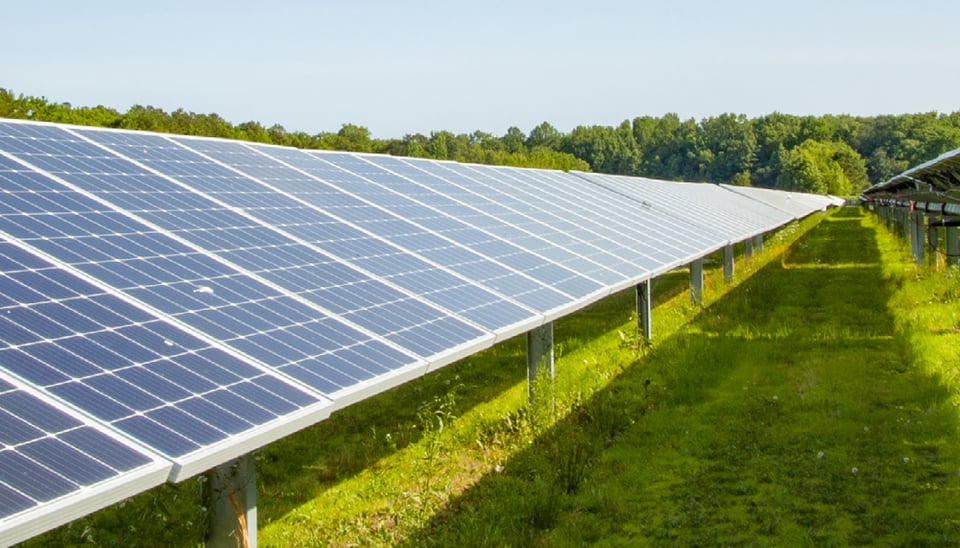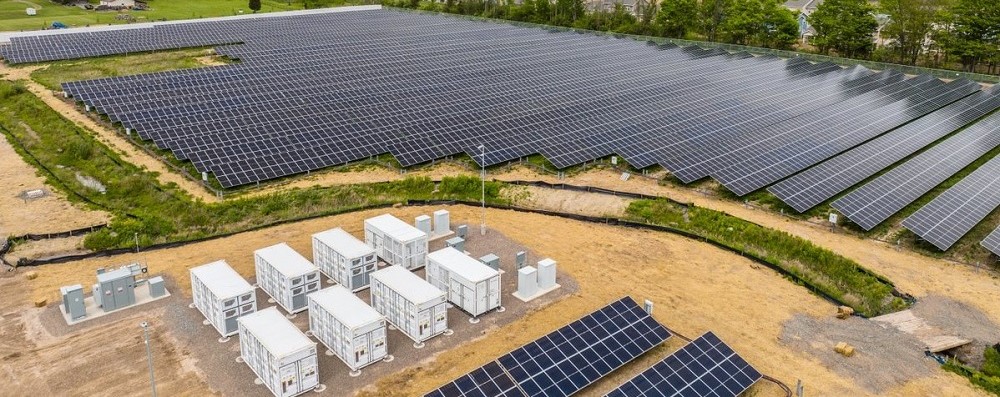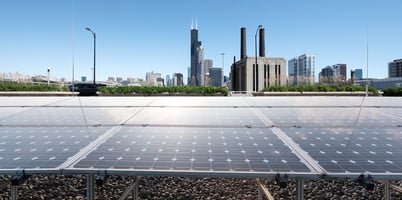Local Solar Power: How Solar PV Can Transform Your Utility

In today's rapidly evolving energy landscape, utilities face various challenges, from shifting load patterns due to electrification to meeting renewable portfolio standards (RPS). Within this context, integrating solar photovoltaic (PV) systems is a transformative resource for utilities seeking to navigate these potential challenges most effectively on behalf of local communities.
Solar PV offers utilities a way to diversify energy portfolios and a pathway toward both greater energy independence and reduced carbon emissions. Beyond its environmental benefits, solar PV presents compelling economic advantages, including Solar Renewable Energy Credits (SRECs), which can be leveraged in a couple of ways by utilities—more on that later!
Moreover, embracing solar PV can further align utilities with evolving clean energy expectations, community goodwill and leadership in transitioning to a cleaner, more sustainable energy future. Let's now explore how solar PV systems offer utilities a way to address energy consumption effectively while supporting these evolving expectations.
Benefits of Local Solar PV Systems for Utilities
Utilities that manage significant energy consumption usually encounter a common challenge: prioritizing customer needs and insulating those customers against the rising costs of energy. Thankfully, deploying local solar PV does not force utilities to prioritize.
One reason is the structure of the power purchase agreement (PPA) for solar PV systems. This performance-based contract has enabled more utilities to deploy solar PV with no capital expenditure and no operations and maintenance risk tied to technology underperformance or related problems—helping to insulate local communities against rising energy cost fluctuations—thereby enhancing cost stability over time. In fact, the solar industry’s exponential growth is directly tied to the success of the PPA contract structure, which was a significant innovation in enabling utilities to consume more solar energy.

Beyond the PPA structure, Solar Renewable Energy Credits (SRECs) are an additional opportunity to benefit from solar. SRECs can be leveraged in a couple of ways by utilities: SRECs can be applied toward a utility's requirement/quota or alternatively, SRECs can be sold to the market.
If you're unfamiliar with SRECs or standard Renewable Energy Credits (RECs), RECs are designed to compensate you for the environmental benefits of producing renewable electricity. RECs can be held or sold to utilities or other companies seeking to offset carbon emissions, providing an additional revenue stream from your on-site solar system.
As a leading developer of renewable energy solutions in North America, Convergent Energy and Power (Convergent), has been a leader in developing of on-site renewables for over a decade. Throughout that time, we’ve gained expertise, working closely with utilities to take the hassle out of on-site renewable solutions by building, owning, and operating systems on customers’ behalf. Once again, we finance the system, so there is no CapEx required on the part of our customers.
By partnering with Convergent, utilities gain an experienced local partner to help expedite lengthy queues at the distribution level and get a solar PV system online as efficiently as possible.
Ready for Solar but Unsure Where to Site it? How We Evaluate Proposed Land Parcels for Solar PV
Convergent’s land development team is responsible for ensuring access to suitable land through negotiations and agreements with local landowners. Identifying land where solar generation can be permitted is crucial. While it’s rare that a municipal utility has multiple acres available, often municipal governments have land that could be available for solar PV. Working with a partner to determine if that land is appropriate for solar PV is crucial.

Attempting to permit a project where it's not allowed in the designated zone could entail complex processes such as obtaining an ordinance amendment or a conditional use permit. Therefore, the focus remains on locating areas where zoning regulations align with the project's objectives. The permitting process establishes the solar PV project's legality, safety, and environmental sustainability. It also helps mitigate potential risks or negative impacts on the surrounding community.
Like our land development efforts, we recognize the Investment Tax Credit (ITC) as a valuable opportunity where we help you maximize the tax credit. One way we can help is through leveraging energy corridors (locations), while another avenue is through compliance with domestic content requirements.
In addition to leveraging tax credits like the Investment Tax Credit (ITC), additional incentives exist such as those provided by the Inflation Reduction Act (IRA).
If you’re a utility, don’t stress about not knowing how to navigate all these incentives. As mentioned, the right partner will handle this for you. Convergent has a proven track record in effectively monetizing the ITC, ensuring our customers reap the full rewards of their solar investments.
Optimizing Grid Performance with Solar-Plus-Storage
As utilities endeavor to maintain reliability while advancing sustainability within their local communities, integrating new technologies is critical. Among these, energy storage (typically in the form of battery storage) can “firm up” solar PV, maximizing its value to the grid. When paired with solar PV, (solar-plus storage), the system can store and discharge solar energy rather than energy from the grid— making solar-plus-storage stand out as an optimal solution.
Solar-plus-storage, which offers the ability to store solar energy when the sun is shining and dispatch it when it isn’t, can extend the value of solar energy by providing reliability to your community’s energy capacity needs. Pairing solar PV with battery storage can also be an essential cost-saving tool by capturing additional solar energy during certain times when electricity rates are low and discharging it during times when electricity rates are high.

A significant amount of solar energy is usually lost in the conversion process, which can also be mitigated by battery storage. There are numerous benefits of pairing solar energy with energy storage, outlined in a previous blog post: Solar-Plus-Storage: 3 Reasons Why They’re Better Together.
How to Get Started on Your Local Solar PV or Solar-Plus-Storage System (and Your Community's Cost Savings)
In conclusion, integrating local solar PV systems has proven to be transformative for utilities navigating today's intermittent, renewable-focused energy landscape. By embracing solar PV, whether or not it is paired with energy storage, utilities can create more flexibility and autonomy for the grid and a more reliable and renewable generation source for communities.
To sum it all up, leveraging local solar PV allows utilities to better meet customers’ needs and expectations, insulate against rising energy costs, support sustainability goals, and become leaders in the transition to a cleaner, more sustainable energy future.
Please contact us today for a free, customized evaluation if you’re interested in learning more about how solar PV can benefit your community.

Lisa Katz is Vice President of Utility Origination at Convergent Energy & Power. Lisa has over 15 years of experience working closely with global and domestic businesses and utilities to reduce their energy cost and carbon footprint. Her unique blend of experience includes sales management, public policy, business strategy, marketing, and project management in diverse markets that span power generation, combined heat and power, biogas, renewable natural gas, hydrogen and environmental controls.



